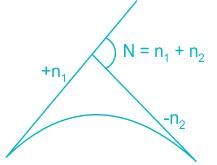Civil Engineering (CE) Exam > Civil Engineering (CE) Tests > Test: Vertical Alignment - Civil Engineering (CE) MCQ
Test: Vertical Alignment - Civil Engineering (CE) MCQ
Test Description
10 Questions MCQ Test - Test: Vertical Alignment
Test: Vertical Alignment for Civil Engineering (CE) 2025 is part of Civil Engineering (CE) preparation. The Test: Vertical Alignment questions and answers have been prepared
according to the Civil Engineering (CE) exam syllabus.The Test: Vertical Alignment MCQs are made for Civil Engineering (CE) 2025 Exam.
Find important definitions, questions, notes, meanings, examples, exercises, MCQs and online tests for Test: Vertical Alignment below.
Solutions of Test: Vertical Alignment questions in English are available as part of our course for Civil Engineering (CE) & Test: Vertical Alignment solutions in
Hindi for Civil Engineering (CE) course.
Download more important topics, notes, lectures and mock test series for Civil Engineering (CE) Exam by signing up for free. Attempt Test: Vertical Alignment | 10 questions in 30 minutes | Mock test for Civil Engineering (CE) preparation | Free important questions MCQ to study for Civil Engineering (CE) Exam | Download free PDF with solutions
Detailed Solution for Test: Vertical Alignment - Question 1
Test: Vertical Alignment - Question 2
The shape of the most commonly designed highway vertical curve is
Detailed Solution for Test: Vertical Alignment - Question 2
Test: Vertical Alignment - Question 3
The ruling gradient required for plain or rolling terrain is ____
Detailed Solution for Test: Vertical Alignment - Question 3
Detailed Solution for Test: Vertical Alignment - Question 4
Test: Vertical Alignment - Question 5
The maximum grade compensation for a curve of radius 75m is?
Detailed Solution for Test: Vertical Alignment - Question 5
Test: Vertical Alignment - Question 6
Curve which changes the alignment of road from downhill to uphill is called as ________.
Detailed Solution for Test: Vertical Alignment - Question 6
Detailed Solution for Test: Vertical Alignment - Question 7
Detailed Solution for Test: Vertical Alignment - Question 8
Test: Vertical Alignment - Question 9
If the length of the summit curve having SSD as 150m and deviation angle is 1 in 30 is ______
Detailed Solution for Test: Vertical Alignment - Question 9
Test: Vertical Alignment - Question 10
The equation for L<OSD for summit curve is given by ___________
Detailed Solution for Test: Vertical Alignment - Question 10
Information about Test: Vertical Alignment Page
In this test you can find the Exam questions for Test: Vertical Alignment solved & explained in the simplest way possible.
Besides giving Questions and answers for Test: Vertical Alignment, EduRev gives you an ample number of Online tests for practice
Download as PDF















